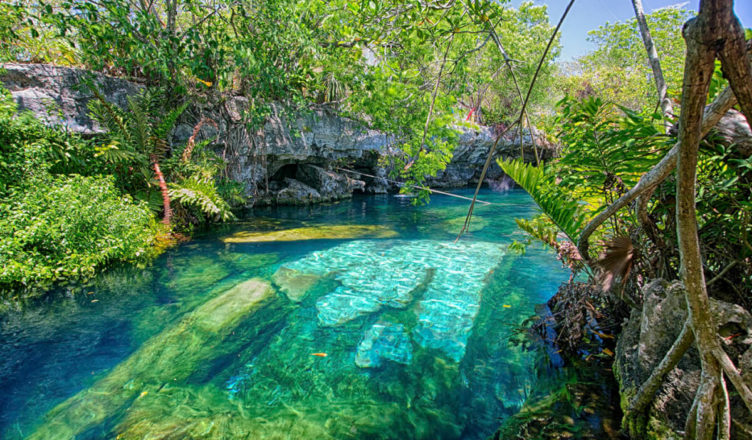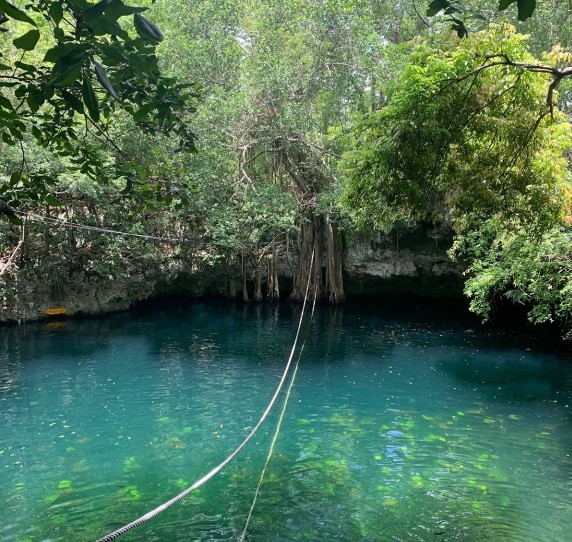The area covered from Riviera Maya to Yucatan Peninsula on the southeast part of Mexico is full of cenotes. As we have mentioned in previous posts, cenotes are natural sinkholes of fresh water filtered through the rocks of the karstic soil of the zone. All along Riviera Maya, areas with many of these sinkholes close to one another have been discovered. Specialists suggest the existence of a huge and complex cavern system interconnecting them. In these cenotes, scuba and snorkel are common activities due to their depths and biodiversity. There is a large number of cenotes near Puerto Morelos and Playa del Carmen. Among Playa del Carmen nearest cenotes, there are the following:
Chaak Tun Cenote
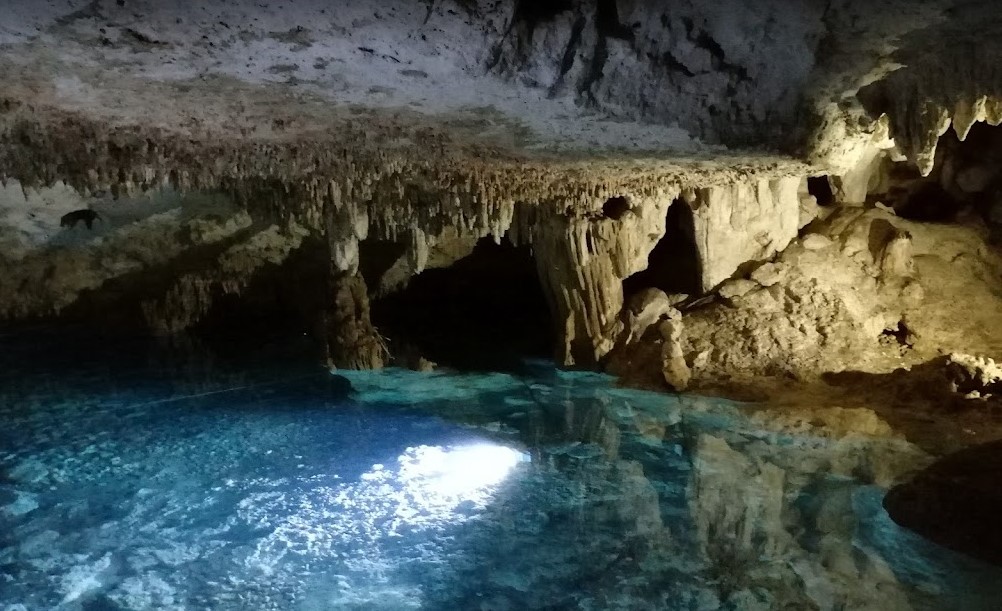
Part of one of the largest hydrologic systems of the world formed by Yucatan Peninsula underground rivers, it is the best well-kept secret of Playa del Carmen, Chaak Tun cenotes.
Previously known as Las Brujas (The Witches) cave, these were frequented from more than 30 years ago by the few inhabitants daring to explore the dense Mayan jungles to enjoy the great treasure that will become Chaak Tun years later.
Located just 10 minutes from Downtown Playa del Carmen, its name Chaak Tun comes from the Mayan Words «Chaak» which means “rain”, and «Tun» which means “stone”, meaning “Water coming from stones” in plain English.
It wasn’t until 1999 when these beautiful cenotes became accessible to visitors. Since then, Chaak Tun offers the opportunity to dive into the crystal waters of Mayan underworld and watch impressive stalactites and stalagmites created with the passing of years.
Xca Ha Park

Xca Ha is a park with two cenotes, six pools, restrooms, tables, chairs, showers and lifesavers. A beautiful place with a resort-like atmosphere with pools and small slides.
The main attraction of the park is the cenote with not-so-cold water. Little, but keeping its natural atmosphere with little fishes, bats in the cave and a crystal clear area. Another plus is that it doesn’t get as crowded as most cenotes.
Pájaros (Birds) Cenote
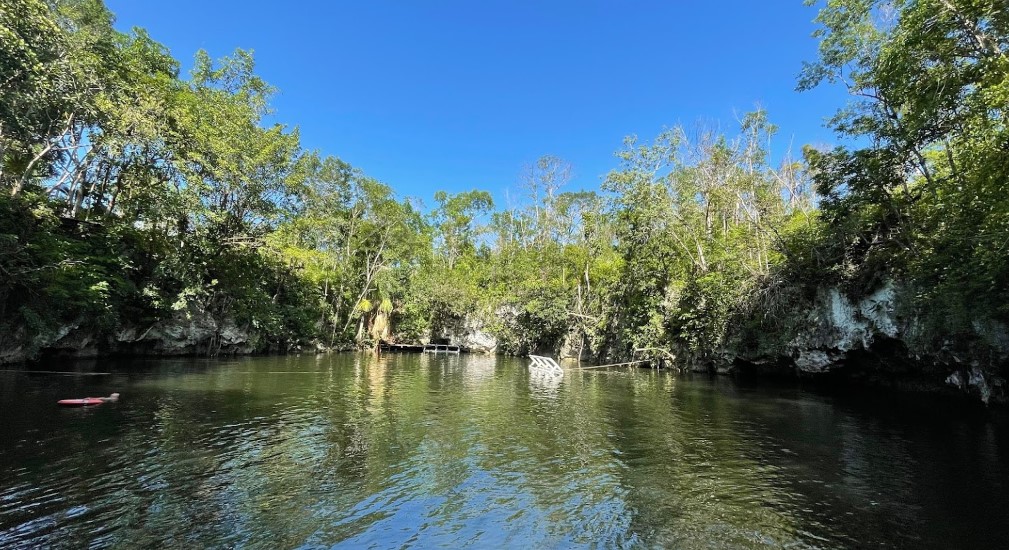
Around 20 minutes from Playa del Carmen, Pájaros Cenote is approximately 40 meters deep, an excellent spot for scuba.
It has kayaks, small boats and jumping platforms 11 meters high. There is also a temazcal cave, where Mayan rituals are often held.
It could be a good idea to bring food and drinks.
A hidden and extra discrete cenote. The sign reads “Sac-Nicte Cenote” (it’s the same place). Very few people, mostly locals. A beautiful place with kind and friendly staff who takes care of cleaning leaves and the whole place.
There are two small piers where towels can be extended, both get sunlight and shadow.
There are PVC-built boats available on site with wood pieces for rowing and a rope to swing.
There is also a small restaurant whose guacamole and quesadillas are tasty and popular.
Zapote Cenotes
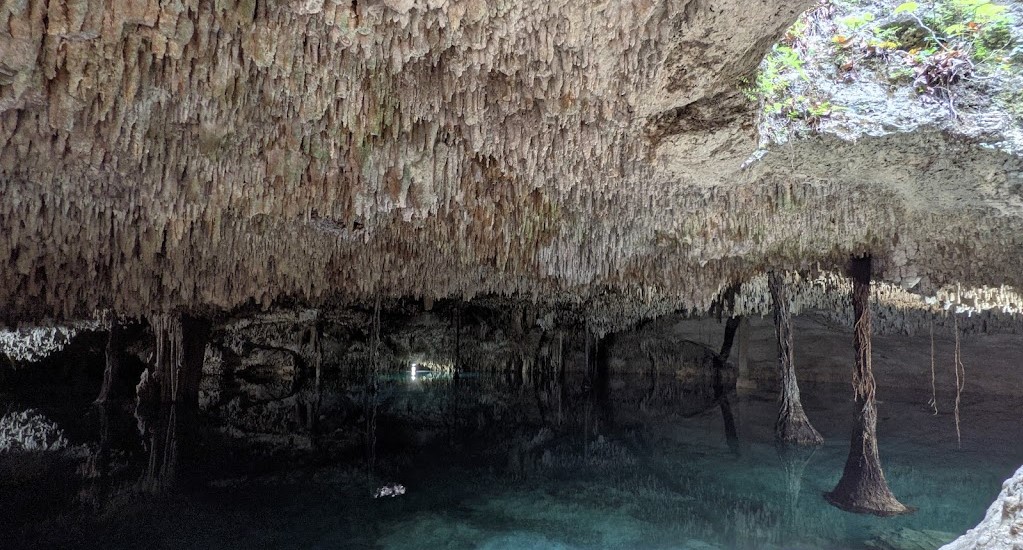
Four cenotes in one, including a cavern or underground cenote dating beyond 10 thousand years back.
Each cenote has optional activities such as jumping platforms, aquatic zipline, own-gear snorkeling and extreme activities for an extra cost.
A four hours visit can be enough to get the most fun out of this cenote, depending on the energy levels you carry on.
Verde Lucero (Green Bright Star) Cenote
This cenote belongs to one of the most beautiful natural formations located in the route to Puerto Morelos, right in the Ruta de Los Cenotes (Cenotes Route). It’s one of the few popular air-open cenotes, allowing one to appreciate its crystal waters and its colorful flora.
It has exciting ziplines, and it’s open everyday from 9am to 5pm.
Cristalino (Crystal) Cenote
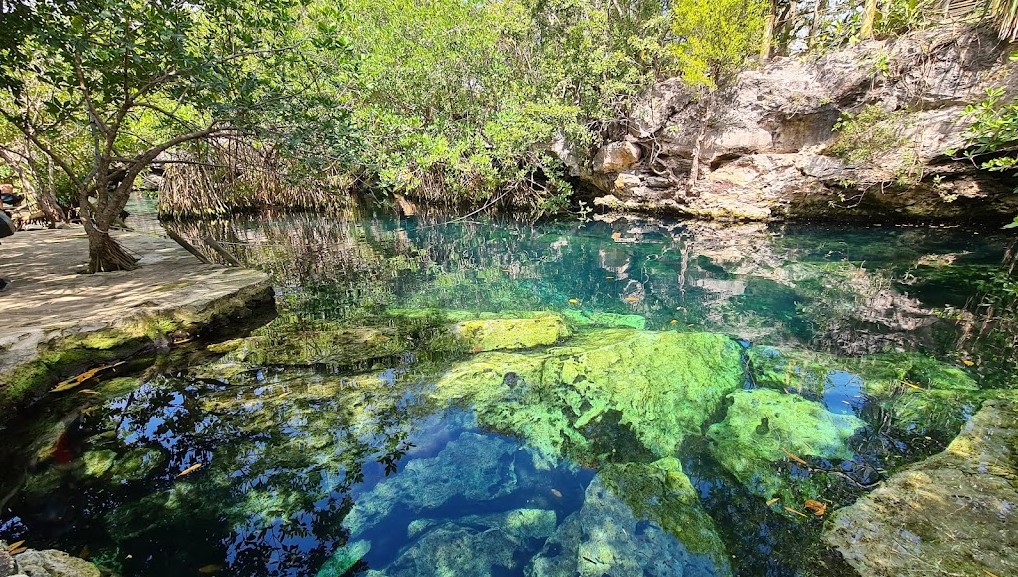
Cristalino Cenote is located around 20 km from Playa del Carmen, 25 minutes by car. It is near other cenotes, such as Cenote Azul and Cenote Jardín del Edén.
Entrance it’s priced at $150 pesos for adults and $100 for children traveling by own account. For scuba practices, a $200 pesos fee must be covered. It’s open to public everyday from 8:00am to 6:00pm. The entrance includes a lifejacket.
It’s surrounded by lush vegetation. It’s crystal water allows you to watch the giant stones and tree roots underwater.
Most of this cenote has a considerable depth (2 or 3 meters), so it’s better to wear the lifejackets if you don’t have much swimming experience.
There is also an attraction for those brave adventure-seekers: A jumping platform where you can jump to the deepest part of the cenote (6 meters approximately). You can jump with or without the jacket, whatever your guts tell you!

